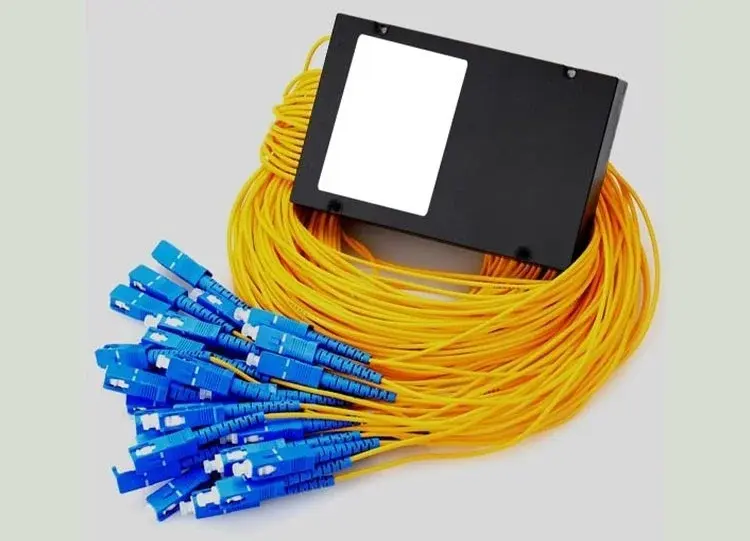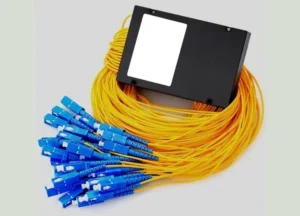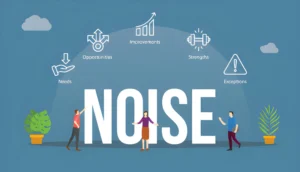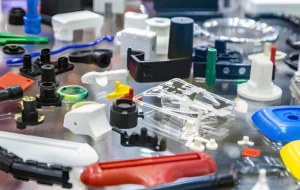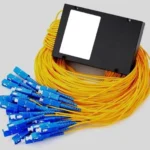Your entire company’s data lives on a laptop someone bought three years ago. No backup. No redundancy. Just hope.
Then the hard drive fails on a Thursday morning. Everything’s gone—customer records, financial data, project files, email archives.
You call the IT guy. He says recovery might work, but it’ll cost 200,000 KES and take three weeks. Your business grinds to a halt while you wait.
That’s the reality facing most Kenyan businesses that haven’t invested in proper physical server infrastructure.
They’re running on borrowed time, and they don’t even know it.
Why Physical Servers Became Essential (Not Optional)
Ten years ago, servers were luxury items for big companies. Today, they’re survival equipment for any business that wants to keep operating.
Here’s what changed:
Your team isn’t all in one office anymore. People are working from different locations, accessing files from cafes, homes, and co-working spaces. Your customers expect 24/7 access to their data. Your compliance requirements demand secure, auditable storage. Your competitors are getting faster, smarter, more organized—because they have centralized systems.
A physical server isn’t about being fancy. It’s about being reliable.
Dell, HPE and Lenovo server solutions control the largest market share in Kenya for delivery of high processing power IT Equipment, and more Kenyan businesses are recognizing why this infrastructure matters.
When you have proper server infrastructure, your business doesn’t stop because one computer breaks. Your data doesn’t disappear because someone spilled coffee on a keyboard. Your team can actually work efficiently instead of emailing files around and praying nobody overwrites anything important.
Own Your Data Infrastructure—Enterprise Server Solutions Built for Kenya
Here’s the problem: most Kenyan businesses treat their physical server infrastructure like an afterthought.
They buy some random computer, stick it in a corner, and call it a “server.” Then they’re shocked when it crashes and nobody can work.
The better approach is investing in actual server hardware designed for the job.
Minify Solutions physical server products are built exactly for this—companies that need reliable, secure infrastructure without enterprise-level complexity or price tags. When you choose proper enterprise server hardware in Kenya, you’re not just buying a computer. You’re buying control, security, and peace of mind that your data is protected and accessible.
What Happens When Your “Server” Isn’t Actually a Server
Let’s talk about the disasters I’ve seen.
The Backup That Doesn’t Exist
A consulting firm in Westlands has been running on one desktop computer for five years. They backup files manually whenever someone remembers. Their accountant has critical financial data on her personal laptop. Their project manager keeps important contracts on a USB stick.
One infected email hits the accountant’s laptop—ransomware encrypts everything. They can’t access financial records. They can’t pay vendors. They can’t process client invoices.
That’s not a technical problem. That’s a business problem.
The Growth Wall
An e-commerce company hits 15 employees and realizes their file-sharing system is chaotic. Multiple people can edit the same document, creating conflicting versions. Files get lost in email threads. Nobody knows who has the latest version of anything.
They’re spending two hours a day just figuring out their own documents instead of running the business.
The Compliance Nightmare
A healthcare provider in Nairobi needs to store patient data securely according to regulations. They’re currently using Google Drive shared with everyone who has the password. An auditor tells them they’re not compliant with data protection standards. They face penalties and lose client trust.
These aren’t hypothetical scenarios. They’re what happens when you ignore physical server infrastructure.
Why Your Business Specifically Needs a Physical Server Right Now
Your Data Stays Under Your Control
One of the biggest reasons some companies choose physical servers over the cloud is the added feeling of security they get knowing that they have complete control over their data and who has access to it.
When you own a physical server, you’re not relying on a third party to keep your information safe. Nobody can suddenly change pricing. Nobody can access your data to analyze it. Nobody can shut you down because of a policy change.
It’s yours. Complete ownership.
Your Data Never Leaves Your Building
Sensitive information stays physically in Kenya. Not in some data center in another country. Not split across multiple cloud providers. Not dependent on internet connectivity to access.
For businesses handling confidential client information, financial records, or proprietary research, that control is invaluable.
You Pay Predictably
Cloud services seem cheap until you scale. Then your monthly bill surprises you.
With a physical server, you buy the hardware once and own it. You pay for electricity and internet. That’s it. No surprise bills. No surprise outages when your cloud provider has issues.
The Real Cost Breakdown (What This Actually Looks Like)
Let’s be practical.
A decent business-grade physical server from Dell, HPE and Lenovo costs between 300,000 and 1.5 million KES depending on specifications and processing power.
That sounds expensive until you consider the alternative:
- Ransomware attack recovery — 500,000+ KES if you’re lucky, sometimes millions.
- Data loss disaster — could be worth more than your entire business if it’s client data or financial records.
- Team productivity loss — if your team can’t access files for a day, that’s thousands of KES in lost work.
- Compliance fines — if you lose regulated data, penalties can exceed the cost of proper infrastructure by 10x.
One serious incident wipes out the savings you thought you were making.
Once you own the server, your ongoing costs are minimal:
- Electricity and cooling
- Basic maintenance
- Maybe someone’s time managing it (or you can hire managed IT support for 10,000-25,000 KES monthly)
Compare that to constantly paying cloud providers or dealing with disasters.
The math becomes obvious pretty quickly.
The Infrastructure You Actually Need (Without the Confusion)
Let’s simplify this.
Physical servers come in a few configurations:
- Tower Servers — looks like a big desktop computer, sits under your desk or in a closet. Good for small teams. Limited capacity and harder to maintain than others.
- Rack Servers — mounted vertically in a cabinet. Takes up way less space, easier to manage cooling and cables, better for growing teams. This is what most medium businesses should consider.
- Blade Servers — super compact, multiple servers in one cabinet. Overkill for most Kenyan businesses unless you’re running serious operations.
For most Kenyan businesses, a rack server from Dell, HPE, or Lenovo makes the most sense. You get reliability, scalability, and support infrastructure without the enterprise bloat.
Physical Servers vs. Cloud—The Real Difference
This is where people get confused because both solve different problems.
Physical Servers (On-Premise)
- Your hardware sits in your office or secure location
- Complete data control and privacy
- Predictable costs
- You handle maintenance and troubleshooting
- Better for regulated industries and sensitive data
- Initial investment is higher
Cloud Servers
- Your data lives on someone else’s infrastructure
- They handle maintenance and security patches
- You pay as you scale
- Dependent on internet connectivity
- Someone else can access your data
- No long-term investment
Here’s the thing: there’s an undercurrent of effort designed to put those parts of the data and application stack in on-premises technologies, especially where cloud computing is not necessarily as cost-efficient, secure, accessible or functional.
The trend in 2025 isn’t “cloud only.” It’s hybrid—cloud for some things, physical servers for mission-critical data.
Smart businesses in Kenya are doing exactly this.
The Hidden Benefit Nobody Talks About
When you have a physical server, your team actually works together.
Seriously.
With proper infrastructure, you can implement:
Centralized File Storage — everyone accesses the same documents, same data, no version conflicts.
Real-Time Collaboration — multiple people can work on the same project simultaneously without email chaos.
Access Control — you decide exactly who sees what, with audit trails showing exactly who accessed what and when.
Automated Backups — your data is backed up constantly without anyone thinking about it.
Suddenly, your team operates like an actual organization instead of a group of people with random files scattered everywhere.
Productivity improves. Mistakes decrease. People stop spending time figuring out file systems.
What to Actually Look For in a Physical Server
When you’re evaluating server options, focus on these specifics:
- Processing Power (CPU) — what are you actually running? File storage needs less CPU than databases or applications. Don’t overpay for power you won’t use.
- Memory (RAM) — this is where your active data lives. More RAM means faster access. If your team is 10 people sharing files, 16-32GB is usually enough. If you’re running databases, you need more.
- Storage (Hard Drives or SSDs) — how much data do you have? How much growth are you expecting? SSDs are faster than traditional hard drives but more expensive. Consider both.
- Redundancy — does it have RAID (Redundant Array of Independent Disks)? This protects you if one drive fails. Essential for business-critical data.
- Reliability Rating — look for servers with high Mean Time Between Failure (MTBF) ratings. This predicts how long the server typically runs before needing repair.
- Support — can you actually reach someone when it breaks? Not a chatbot in another country—real support.
The Setup That Actually Works for Kenya
Your server needs three things working together:
- The Hardware — the actual server sitting in your location or a secure facility nearby.
- The Power — reliable electricity with backup power (UPS or generator). Kenya’s power grid is improving but still unpredictable in some areas.
- The Connectivity — fast internet connecting your office to the server and potentially connecting to offsite backups.
Get any one of these wrong and your reliable server becomes useless.
The server needs to be in a controlled environment—not sitting on someone’s desk surrounded by food and drinks. It needs consistent power—not shared with every other office device competing for electricity. It needs dedicated internet—not fighting with people streaming videos.
The Backup Strategy Nobody Implements (Until It’s Too Late)
Here’s the most common mistake:
Business buys a physical server, feels secure, and stops thinking about backups.
Then the server building gets flooded. Or someone spills water on it. Or there’s a power surge nobody anticipated.
Because the backup is also stored onsite, it is vulnerable to physical damage like flooding or fire.
The right approach:
- Primary Backup — automated backups to external drives or second server in your location.
- Secondary Backup — offsite backups to a secure location or cloud storage (yes, use cloud for backups—that’s the smart play).
- Offsite Redundancy — critical data replicated to another physical location or verified against cloud copies.
This isn’t paranoia. This is experience.
Businesses that implement this survive disasters. Businesses that don’t often don’t.
The 2025 Advantage (Why Now Is the Right Time)
Server technology keeps improving while prices stay reasonable. Kenyan IT support is getting better. Local providers like iDeveloper Tech delivering server installation and maintenance in Kenya with HP & DELL Servers supply make implementation accessible.
Internet speeds in Kenya are faster than they were five years ago. Power reliability is improving. The business environment is more competitive—which means infrastructure becomes a real differentiator.
Companies that properly implement physical servers in 2025 will have massive advantages over competitors still hoping their data doesn’t get lost.
What You Actually Do This Week
Audit Your Current Setup — where is your data actually living right now? On laptops? External drives? Gmail? All over the place?
Identify What’s Critical — what data would destroy your business if it disappeared? Focus on protecting that first.
Get a Quote — talk to local providers about server options. You don’t need the fanciest setup—you need something appropriate for your actual needs.
Plan for Redundancy — how will you backup your backup? Where will that backup live?
Set a Timeline — don’t procrastinate. Most businesses that lose data did so because they kept saying “next quarter.”
This isn’t complex. But it requires actually doing it instead of thinking about doing it.
The Bottom Line
A physical server isn’t a luxury item for big corporations anymore.
It’s essential infrastructure for any Kenyan business that wants to operate reliably in 2025.
You’re not buying complexity. You’re buying certainty—that your data stays safe, that your team can work efficiently, that one broken hard drive doesn’t end your business.
The companies winning right now in Kenya aren’t necessarily the ones with the most money. They’re the ones with proper infrastructure backing up their operations.
Everything else—marketing, sales, product—works better when your foundation is solid.
Start building yours today.
Also Read-
- Kickstart Your Tech Career with a Diploma in Information Technology at Sigma
- Elevating Productivity: Integrating Corporate Health Management into Your Business
- Best Practices for Launching a Private Label Supplement Business
